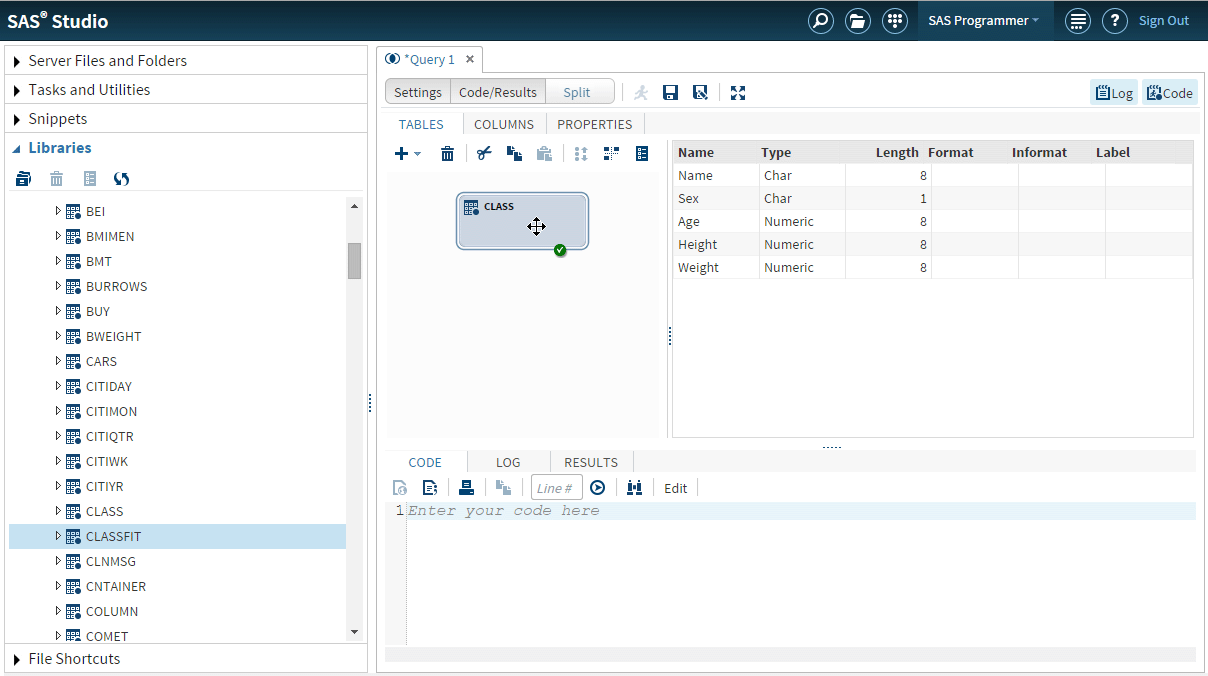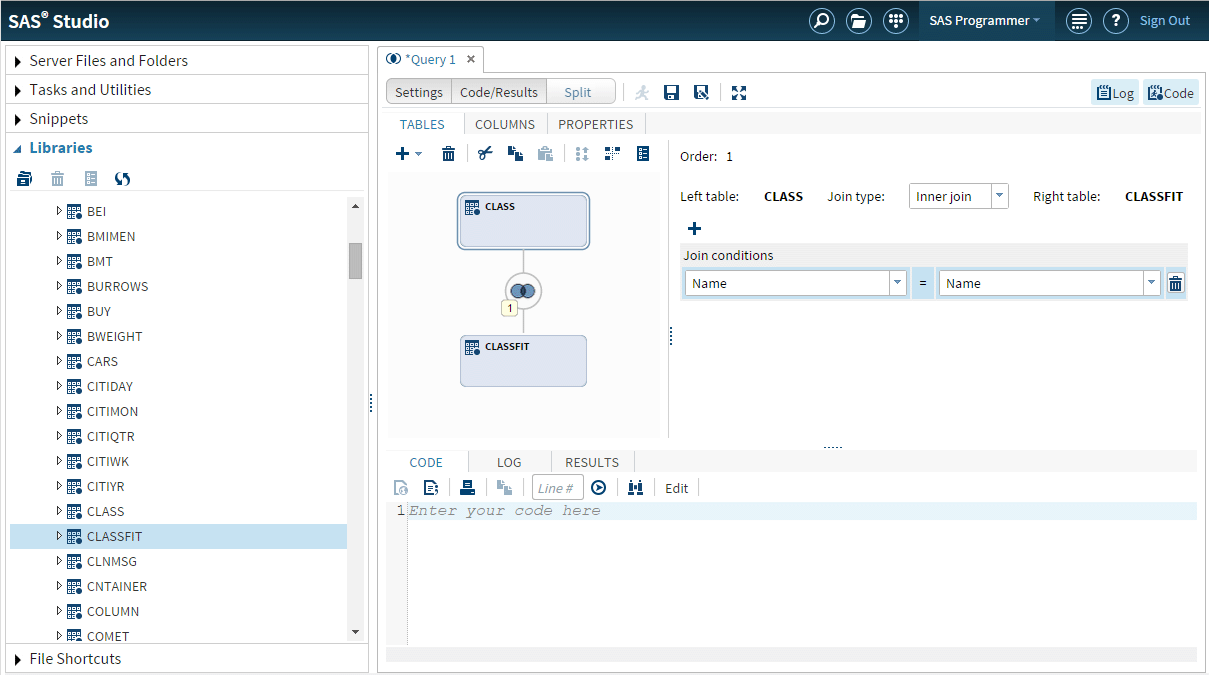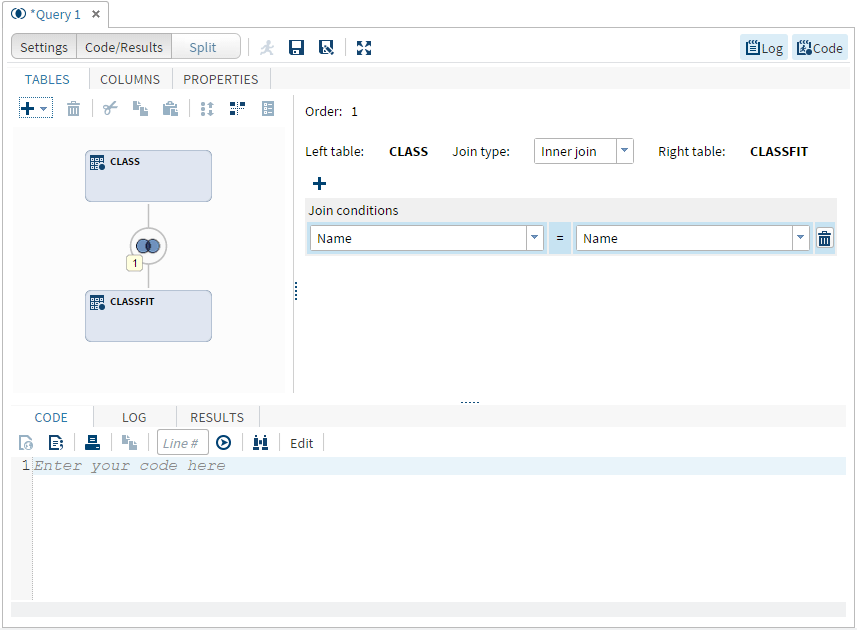Understanding Joins
Joining Tables
When you create a query, you can join multiple tables together. SAS Studio can automatically join the tables
together for you, or you can manually create the join. SAS Studio attempts to join
tables by columns that have the same name and type. If no matches for column name
and type are found, then you can specify the join criteria.
Note: If you have more than one
table in your query and you do not specify join criteria, then your
output data includes the Cartesian product, or every possible combination,
of the data values.
Creating a Join
To add a table and automatically
create a join:
From the Libraries of the navigation pane, drag the table that you want to add to the query to the Tables tab. Next, drop that
table on top of the first table in the query to join the two.
The Join window
displays the join criteria. In the following example, the Classfit
table is automatically joined to the Class table by using the Name
column in both tables.
If a join cannot be created automatically, you can specify the join condition manually.
To manually create a
join:
-
-
From the Join type drop-down list, select the type of join that you want to use. The default join type is Inner join.
-
Click Save. A join is created between the tables. If the tables include columns with matching names and data types, then a join condition is automatically created. If the tables do not include columns with matching names and data types, then you can select the columns for the join condition from the column drop-down lists.
Understanding the Types of Joins
SAS Studio supports
four different types of joins. You can select the type of join you
want by modifying an existing join.
You can select the join
option that you want to use in the Join window.
|
SAS Studio Join Type
|
Join Icon
|
Description
|
|---|---|---|
|
Inner Join
|

|
The output rows include those for which the column in the first table matches the
joining criterion of the column in the second table. Joins are inner joins by default.
|
|
Left Join
|
 |
The output rows include
all rows from the first table and the rows from the second table in
which the joining criterion is met.
|
|
Right Join
|
 |
The output rows include
all rows from the second table and the rows from the first table in
which the joining criterion is met.
|
|
Full Join
|
 |
The output rows include
all matching and nonmatching rows from both tables.
|
Modifying an Existing Join
You can modify an existing join by selecting a different type of join or by changing
the columns that are used in the join condition. You can also add and remove join conditions or remove the entire join.
To modify a join:
To delete the entire join, right-click the join indicator and select Delete.
Copyright © SAS Institute Inc. All rights reserved.





